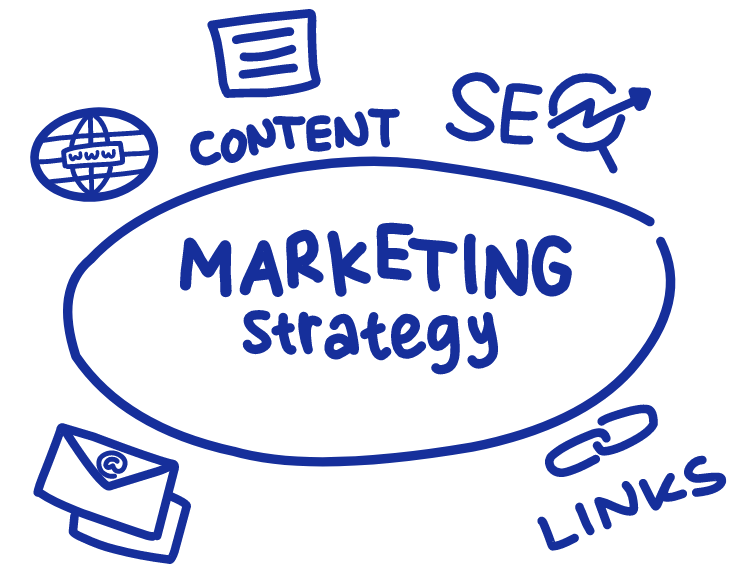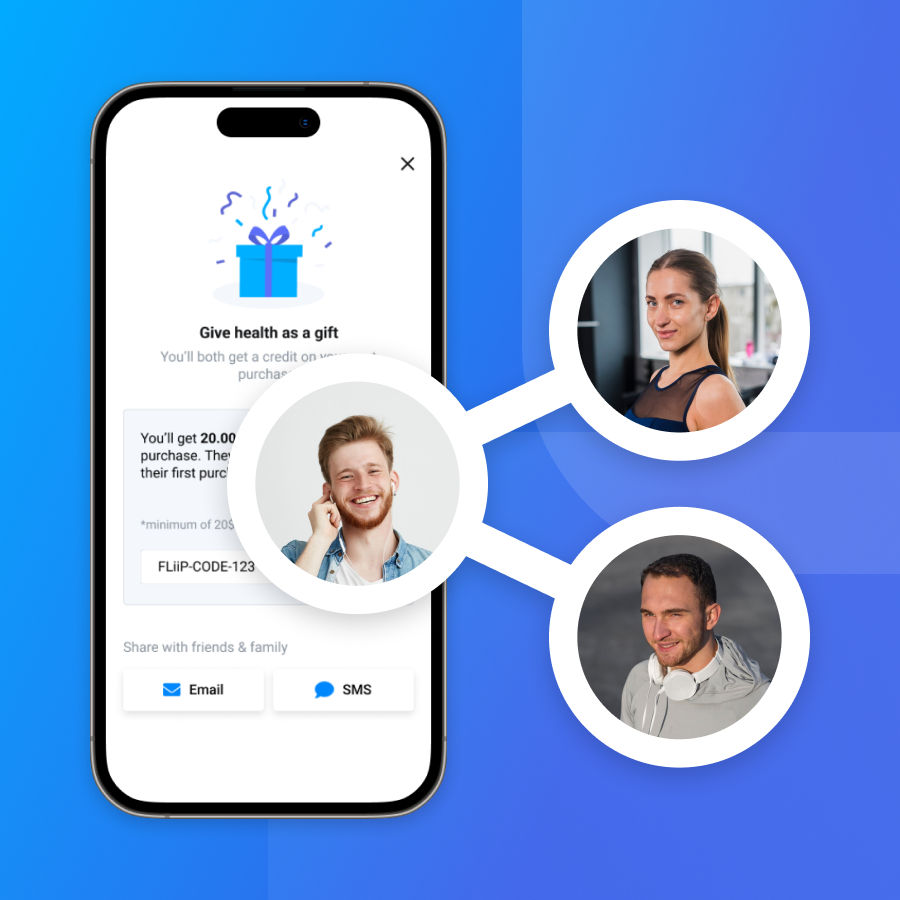Sales and Marketing Terms Every Gym Owner Should Know

Transitioning from fitness and athletics to business management can be challenging. Most gym owners start out with a love and passion for fitness and health and may have a vague understanding of business ownership and what revenue growth implies.
Without names for what needs to be done (and an understanding of the environment you’re now operating in), you might feel lost, confused, and overwhelmed.
Names give you power. They increase your comprehension and allow you to accelerate breakthroughs in cloudy thinking so you can focus on specific, necessary actions required to achieve your goals.
Here are 71 key and most common sales and marketing terms you will encounter during your gym management journey. Don’t worry about learning them all at once—you can bookmark this page and come back as often as you need to!
The Foundations
Annual Recurring Revenue (ARR): Predictable revenue generated from memberships or services billed annually. It’s a key metric for financial stability and growth forecasting.
Break-even Point: The point at which total revenue equals total costs and expenses, meaning the business is neither making a profit nor a loss.
B2B (Business to Business) Sales: Sales strategy focusing on selling services or products directly to other businesses, such as corporate wellness programs to local companies.
B2C (Business to Consumer) Sales: Direct selling of gym memberships and services to individual consumers.
Churn Rate: The percentage of members who cancel their subscriptions within a given period. Minimizing churn is essential for sustaining revenue.
Conversion Funnel: This funnel describes the journey a prospect takes from awareness of your gym to becoming a paying member, highlighting areas for optimization in sales and marketing.
CRM Systems: Technologies that manage customer relationships and analyze customer data to improve business decisions, marketing strategies, and engagement.
Cross-sell: Encouraging members to purchase complementary services or products in addition to their current membership broadens revenue sources.
Customer Acquisition Cost (CAC): The total expense of gaining a new gym member, including marketing and sales costs. It’s crucial for budgeting and marketing strategy effectiveness.
Debt/Equity Ratio: A financial ratio indicating the relative proportion of shareholders’ equity and debt used to finance a company’s assets, this ratio is critical for assessing financial health and leverage.
Digital Marketing Metrics: Measurements used to assess the performance of online marketing initiatives, including website traffic, conversion rates, and social media engagement.
Dynamic Pricing Models: The practice of varying the price of products or services based on market demand, seasonality, or customer loyalty to maximize revenue.
Engagement Rate: A metric used to gauge members’ interaction with your gym’s marketing communications, indicative of content’s effectiveness and members’ interest.
Fixed Assets: Long-term tangible assets used in the operation of a business that are not expected to be converted into cash within a year, such as gym equipment and property.
Follow-Up: The process of continuing communication with a prospect after the initial sales pitch or meeting to keep the gym top-of-mind, address further questions, and nudge them towards making a decision.
Gross Margin: The difference between revenue and COGS (Cost of Goods Sold), excluding other operational expenses. It indicates the profitability of your services.
Lead: Potential customers who have not yet been qualified based on their readiness or ability to purchase.
Lead Qualification: The process of assessing the potential of leads to become customers, ensuring sales efforts are focused on high-potential prospects.
Lifetime Value (LTV): The total revenue expected from a member over the duration of their relationship with the gym, underlining the importance of retention.
Liquidity: The ability of a business to meet its short-term obligations and financial commitments using its available assets, reflecting financial health and operational flexibility.
Market Segmentation and Targeting: The process of dividing the market into subsets of consumers with common needs or characteristics and focusing efforts on those segments most likely to convert into customers.
Monthly Recurring Revenue (MRR): Regular income expected every month from memberships or services, providing a clear view of short-term financial health.
Nurture: The process of developing relationships with prospects at every stage of the sales funnel and through every step of the buyer’s journey, often involving targeted communications to educate and build trust.
Objection Handling: The skill of addressing and overcoming concerns or hesitations that a prospect raises about joining the gym, such as cost, time commitment, or self-doubt.
Recurring Revenue: Income that a business can expect to receive on a regular basis, typically through ongoing services or subscriptions, contributing to financial stability and predictability.
Referrals: Recommendations from satisfied customers to potential customers. In the gym context, this could involve current members encouraging friends or family to join, often incentivized through referral programs.
Revenue Streams: Various sources from which a gym generates income, such as membership fees, personal training, group classes, merchandise, and ancillary services.
ROI (Return on Investment): Measures the profitability of investments made in marketing, sales, equipment, or any business activities, guiding future investment decisions.
Profit Margin: A financial metric that measures the percentage of revenue that exceeds the costs of goods sold, indicating the efficiency of a business in managing its operations and pricing.
Prospect: A qualified lead who has been assessed and determined to have the interest, need, and capability to purchase your gym’s memberships or services.
Sales Funnel: The journey a potential customer goes through, from first becoming aware of the gym to joining as a member, including stages of awareness, interest, decision, and action.
Sales Growth: The increase in sales over a specific period, reflecting the business’s ability to expand its customer base and revenue, an essential indicator of market demand and business health.
Sales Pipeline: A visual representation of where prospects are in the sales process, from initial contact to closing, helping manage sales activities and forecast revenue.
Sales Quota: A target figure set for the sales team to achieve within a specific timeframe, motivating performance and tracking success.
Segmentation: The practice of dividing a target market into approachable groups based on demographics, psychographics, or behavior for more tailored marketing strategies.
Testimonials: Statements from satisfied customers about their positive experiences with the gym, used as a marketing tool to build credibility and attract new members.
Upsell: Offering existing members higher-priced services or memberships, enhancing their gym experience and increasing revenue.
Value-based Selling: A sales approach that emphasizes the benefits and value a product or service brings to the customer, rather than focusing solely on features or price.
Sales Tactics and Revenue Optimization
A/B Testing: A method of comparing two versions of a webpage, ad, or email campaign to see which one performs better. Essential for optimizing marketing strategies and improving conversion rates.
Customer Retention Strategies: Techniques aimed at keeping existing gym members engaged and subscribed, reducing churn rates and enhancing lifetime value (LTV).
Data-Driven Decision Making: The practice of making strategic business decisions based on data analysis and interpretation, critical for optimizing sales strategies and improving overall business performance.
Elasticity of Demand: A measure of how responsive the demand for gym memberships or services is to changes in price or other factors, important for setting pricing strategies.
Funnel Optimization: The process of improving each stage of the sales funnel to increase the overall conversion rate, from initial awareness to final purchase.
Growth Hacking: Innovative, cost-effective marketing techniques aimed at rapidly growing the member base of a gym, often leveraging technology and data analytics.
Influencer Marketing: Collaborating with influencers to promote the gym or its services, leveraging their reach and credibility to attract and engage potential members.
Joint Ventures: Strategic partnerships with other businesses or organizations to expand market reach, offer new services, or co-market complementary offerings.
Key Performance Indicators (KPIs): Specific, measurable metrics used to track the effectiveness of sales strategies and operations, guiding decision-making and strategic adjustments.
Lead Scoring: A methodology used to rank prospects against a scale that represents the perceived value each lead represents to the organization, helping prioritize follow-up based on potential to convert.
Multichannel Marketing: The practice of interacting with potential gym members through various channels, both direct and indirect, to offer them a seamless customer experience.
Marketing Strategy

Brand Awareness: The extent to which consumers are familiar with the qualities or image of a particular brand of goods or services. Increasing brand awareness is crucial for attracting new gym members.
Content Marketing: A marketing strategy focused on creating, publishing, and distributing content for a targeted audience online. For gyms, this could include blog posts, workout videos, and nutritional guides to engage potential and current members.
Conversion Rate: The percentage of visitors to your website or social media profile who take a specific action, such as signing up for a trial or subscribing to a newsletter, indicating the effectiveness of your marketing efforts.
Digital Marketing: The component of marketing that utilizes the internet and online-based digital technologies such as computers, mobile phones, and other digital media and platforms to promote products and services.
Inbound Marketing: A strategy that focuses on attracting customers through content and interactions that are relevant and helpful, as opposed to outbound marketing’s direct solicitation. Inbound marketing methods include content marketing, blogs, events, SEO, and social media.
Lead Generation: The process of attracting and converting strangers and prospects into someone who has indicated interest in your company’s product or service, through various marketing techniques like content marketing, advertising, and social media.
Market Penetration: The measure of the extent to which a product or service is recognized and bought by customers in a particular market. Strategies to increase market penetration might include price adjustments, increased promotion, and distribution channels expansion.
SEO (Search Engine Optimization): The practice of increasing the quantity and quality of traffic to your website through organic search engine results, making your gym more visible to people who are using search engines to find products or services related to fitness.
Social Media Marketing: The use of social media platforms and websites to promote a product or service, engaging with your gym’s community by sharing useful content, running advertisements, and communicating with members.
Target Market: A particular group of consumers identified as the recipients of a specific marketing message. Identifying the target market helps gyms tailor their marketing efforts and offerings to meet the specific needs and preferences of a defined group.
Building the Relationship
Brand Loyalty: The tendency of consumers to continuously purchase one brand’s products over another. Building brand loyalty with gym members encourages long-term retention and referrals.
Community Engagement: The involvement of gym members in a community, where they feel a sense of belonging and mutual support. This can be fostered through events, online forums, and social activities.
Customer Feedback Loops: A system of gathering, analyzing, and using customer feedback to improve service and product offerings, ensuring that the gym meets and exceeds member expectations.
Emotional Intelligence (EQ): The ability to understand, use, and manage your own emotions in positive ways to relieve stress, communicate effectively, empathize with others, and overcome challenges.
Empathy: The ability to understand and share the feelings of another, essential in addressing member concerns and creating personalized fitness experiences.
Engagement Strategies: Tactics designed to interact with gym members actively, keeping them involved and interested in the gym’s offerings and community.
Feedback Mechanisms: Tools and processes used to collect feedback from members, such as surveys, suggestion boxes, and digital platforms, allowing for continuous improvement.
Personalization: Tailoring the gym experience to individual members’ preferences and fitness goals, often using data analytics to inform service offerings and communications.
Rapport Building: The process of developing a connection or trust with members, often through personal interactions, showing interest in their fitness journeys, and providing consistent support.
Relationship Marketing: A form of marketing developed from direct response marketing campaigns that emphasizes customer retention and satisfaction, rather than a focus on sales transactions.
Trust: The firm belief in the reliability, truth, ability, or strength of the gym and its staff, developed over time through consistent, positive interactions and experiences.
Value Proposition: A statement or promise that clearly outlines how a product or service solves a customer’s problem or improves their situation, delivering specific benefits.
With this glossary at your fingertips, you’re better equipped to navigate the complexities of the fitness business landscape. Let it serve as your go-to reference, empowering you to grow your business with confidence and clarity.
Want to Keep Learning?
Check out these resources!
The Psychology of Sales: How to Sell More Gym Memberships
Essential Metrics Every Gym Owner Should Track for Growth



